July 2, 2010
Definitions for Our Math Terms
The purpose of this section of my blog is to provide the educator with both the informal and formal definitions of mathematical terms we use daily. Hopefully both terms will give you and your students a good understanding of the concept.
My prior knowledge and past explanations to the students would have to be the basis for all of the informal definitions. As for the formal definitions all were obtained from the Website www.mathisfun.com. For the formal definitions I felt it was needed to go to a math site rather than take the technical definitions straight from Websters Dictionary.
|
Addition Informal Definition: The idea of addition is when you have a certain number of objects in front of you and then you place more into that pile to create a bigger amount of items than before Formal Definition: Addition is finding the total, or sum, by combining two or more numbers. Example: 5 + 11 + 3 = 19 is an addition |
|
Pattern Informal Definition: Taking a few objects that are the same placing them in a row and repeating that first placement over and over. Formal Definition: Things that are arranged following a rule or rules. Example: there is a pattern in these numbers: 2, 7, 12, 17, 22, … The rule is “start at 2 and add 5 each time” |
|
Subtraction Informal Definition: Having a certain number of objects and take away from the group to have less objects than you began with. Formal Definition: Taking one number away from another. |
|
Symmetry
Informal Definition: Taking any object or picture and being able to draw a line completely down the middle, creating 2 identical halves. Formal Definition: Symmetry is when one shape becomes exactly like another if you flip, slide or turn it. |
|
Deductive
Informal Definition: Drawing conclusions to a math problem are based from what statements are given, our assumption these statements are true and use of our logical thought process. Formal Definition: Deductive reasoning is reasoning which constructs or evaluates deductive arguments. Deductive arguments are attempts to show that a conclusion necessarily follows from a set of premises (http://en.wikipedia.org/wiki/Deductive_reasoning) |
|
Inductive Reasoning
Informal Definition: Our conclusions are not able to be proven to be correct, we draw these conclusions based on a limited set of observations Formal Definition: Inductive reasoning, also known as induction or inductive logic, is a kind of reasoning that allows for the possibility that the conclusion is false even where all of the premises are true. (http://en.wikipedia.org/wiki/Inductive_reasoning) |
|
Number Sense
Informal Definition: Understanding what numbers represent and being able to use them in all types of mathematical processes. Formal Definition: A person’s ability to use and understand numbers: · knowing their relative values, |
|
Operations
Informal Definition: A math action such as adding, subtracting, multiplying and dividing. Formal Definition: A mathematical process. |
| Arithmetic Sequence
Informal Definition: A set of numbers in a specific order which follows a pattern of continually adding the same number to the previous number listed in the set. Formal Definition: Arithmetic sequence is a sequence of numbers such that the difference of any two successive members of the sequence is a constant. For instance, the sequence 3, 5, 7, 9, 11, 13, … is an arithmetic progression with common difference 2. (http://en.wikipedia.org/wiki/Arithmetic_progression) |
| Geometric Sequence
Informal Definition: A set of numbers in a specific order which follows a pattern of continually multiplying the same number to the previous number listed in the set. Formal Definition: Geometric sequence, is a sequence of numbers where each term after the first is found by multiplying the previous one by a fixed non-zero number called the common ratio. (http://en.wikipedia.org/wiki/Geometric_progression) |
|
Base Number Informal Definition: A number that is used as a starting point in a mathematical process. Formal Definition: The Base (or Radix) is the number of digits in a number system. The decimal number system that we use every day has 10 digits (0,1,2,3,4,5,6,7,8,9) and so it is Base-10. Binary digits can only be 0 or 1, so they are Base-2. Base is also the number that is going to be raised to a power. Example: in 82, 8 is the base |
|
Exponent Informal Definition: Is the number that that indicates how many times a number is to be multiplied by itself. It is displayed as a small number in the upper right hand corner of a base number. Formal Definition: The exponent of a number says how many times to use the number in a multiplication. In this example: 82 = 8 × 8 = 64 In words: 82 could be called “8 to the second power”, “8 to the power 2” or simply “8 squared” |
|
Common Difference
Informal Definition: It is the number that indicates the difference between all given numbers in a number pattern (arithmetic sequence) Formal Definition: The difference between each number in an arithmetic series. Example: the series {3, 5, 7, 9, 11 …} is made by adding 2 each time, and so has a “common difference” of 2 (there is a difference of 2 between each number) (http://www.mathsisfun.com/definitions/common-difference.html |
|
Polyhedron
Informal Definition: A 3 diamensional figure with all flat surfaces and no curved sides. It is made of polygons. Formal Definition: A polyhedron is a solid with flat faces (from Greek poly- meaning “many” and -edron meaning “face”). Each flat surface (or “face”) is a polygon. (http://www.mathsisfun.com/geometry/polyhedron.html) |
| Polygon
Informal Definition: A two dimensional closed shape that is formed by straight lines. A polygon has 3 or more straight sides and it never contains any curved lines. Formal Definition: A plane shape (two-dimensional) with straight sides. Examples: triangles, rectangles and pentagons. Note: a circle is not a polygon because it has a curved side (http://www.mathsisfun.com/definitions/polygon.html) |
|
Face Informal Definition: A flat area of a 3 diamensional figure. Formal Definition: Any of the individual surfaces of a solid object. |
|
Edges Informal Definition: The sides of the surface area of a shape. Formal Definition: The line where two surfaces meet. Example: This tetrahedron has 6 edges. It can also be the boundary of a shape, such as the circumference of a circle (http://www.mathsisfun.com/definitions/edge.html) |
|
Reflectional Symmetry Informal Definition: When an object can be halved in the center then having both halves be identical pieces. Formal Definition: A type of symmetry where one half is the reflection of the other half. You could fold the image and have both halves match exactly. (http://www.mathsisfun.com/definitions/reflection-symmetry.html) |
|
Probability Informal Definition: Probability is finding the likelihood of an event happening or not happening. It can be defined in words such as most likely, least likely, impossible, possible, etc. or it can be measured in terms of percentages, decimals and fractions. Formal Definition: Sometimes you can measure a probability with a number: “10% chance of rain”, or you can use words such as impossible, unlikely, possible, even chance, likely and certain. Example: “It is unlikely to rain tomorrow”. (http://www.mathsisfun.com/definitions/probability.html) |
|
Dependent Event Informal Definition: An outcome of an event does rely on previous outcomes. Formal Definition: Events are dependent if the outcome of one event affects the outcome of another. For example, if you draw two colored balls from a bag and the first ball is not replaced before you draw the second ball then the outcome of the second draw will be affected by the outcome of the first draw. (http://www.onlinemathlearning.com/dependent-events.html) |
|
Outcomes
Informal Definition: In an event, it is the result of something occurring. Formal Definition: something that follows as a result or consequence (http://www.merriam-webster.com/dictionary/outcome) |
|
Independent Event
Informal Definition: An outcome of an event does not rely on previous outcomes. Formal Definition:
Examples of Independent Events
|
|
Tree Diagram
Informal Definition: A diagram that shows all the outcomes in an event. Formal Definition: A probability tree diagram shows all the possible events. The first event is represented by a dot. From the dot, branches are drawn to represent all possible outcomes of the event. The probability of each outcome is written on its branch (http://www.onlinemathlearning.com/probability-tree-diagrams.html) |
|
Bar Graph Informal Definition: A bar graph is a chart that illustrates data using bars. Formal Definition: The bars can be horizontal or vertical. (http://www.mathsisfun.com/definitions/bar-graph.html) |
|
Mean
Informal Definition: Is finding the average of a set of numbers by adding all given numbers and dividing it by the number of amount of numbers given. Formal Definition: The mean is the average of numbers: a calculated “central” value of a set of numbers. (http://www.mathsisfun.com/definitions/mean.html) |
| Median
Informal Definition: The median is the number that falls in the middle of a set of given numbers that are then placed in order from least to greatest. Formal Definition: The middle number (in a sorted list of numbers). Half the numbers in the list are less, and half the numbers are greater. (http://www.mathsisfun.com/definitions/median.html)
|
| Mode
Informal Definition: The mode is a number that occurs the most in a given set of numbers. Formal Definition: The number which appears most often in a set of numbers. (http://www.mathsisfun.com/definitions/mode.html) |
|
Range Informal Definition: In a given set of numbers, the difference of the largest and smallest number. Formal Definition: |



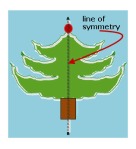




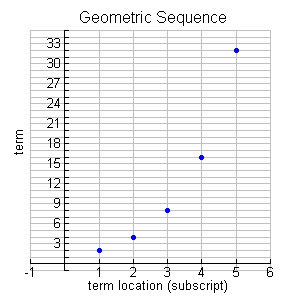






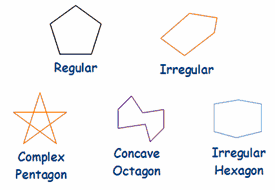



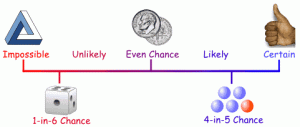
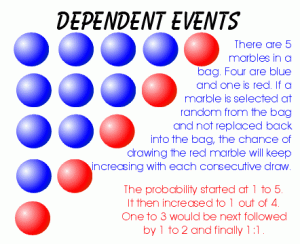
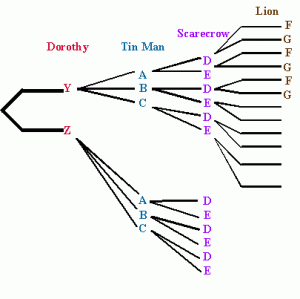





barbaramanatee said,
July 4, 2010 at 11:24 am
Hi Susan! I discovered the MathIsFun website and referenced that also. Looked like a great resource. Nice work!
sophie154 said,
July 4, 2010 at 11:40 am
Thank you Barbara. I enjoyed using elements from that website to support what I was teaching.